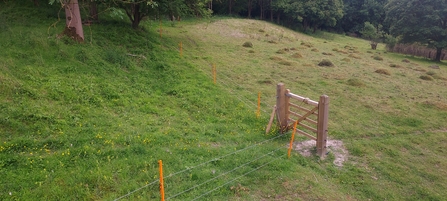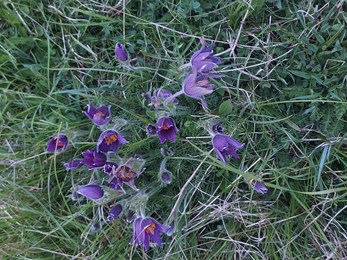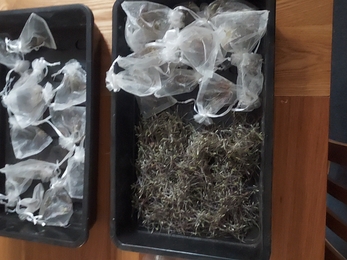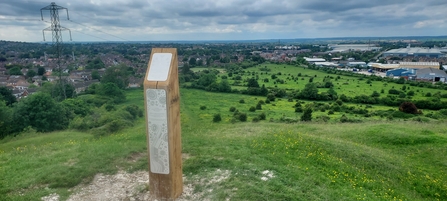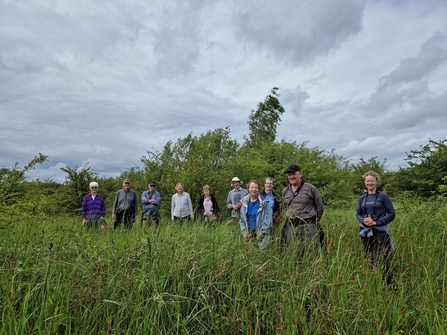As the season shifted from Spring into Summer our staff and volunteers changed gears and tools and started the perpetual task of fence and infrastructure repairs. Grazing is essential for the management of the grassland sites and site security is forever on our mind. Posts rot over time and unfortunately we are often subject to damage to the fence lines, with wires being cut or squashed. On certain sites we are able to take a tractor on site to assist with post installation, on others we have to install by hand. Our usage of the in-county tractor was hindered by a pied wagtail nesting within the chassis, so we had to borrow one from Cambs along with their post bumper.
This was deployed at a number of sites including the The Riddy in Sandy to install posts to protect a newly planted hedge from grazing pressure by cattle. We also sent it to Fancott meadows where we were replacing failed posts in the south meadow, in an area where we couldn’t access with contractors a few years ago.
Finally we used it a Pegsdon Hills, where we’re encountering a huge number of failed posts, all dating from around 2008-16. They seem to be either the softwood posts installed as the formulation of timber treatments were modified or the smaller diameter posts made from home grown sweet chestnut.
Grazing is one of the key ways we can influence the vegetation on the reserves, for better or worse, and the timing of grazing to reduce plant cover but not suppress other wildlife is always tricky. At Totternhoe Knolls we grazed hard throughout the winter months to push back the tor grass, clematis and young scrub that had expanded in recent years with no or limited grazing. As the season advanced we then restricted the herdwick sheep using an electric fence setup paid for by the Beds Local group, which gave the rest of the site a chance to bloom.


